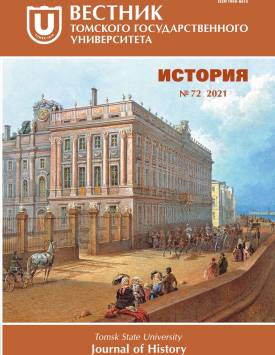Pierre Werner and the creation of the economic and monetary union of the EU. Review: Danescu E. Pierre Werner and Europe: the Family Archives behind the Werner report. Basingstoke UK: Palgrave Macmillan, 2019. 520 p.
The review is aimed to identify the input of the monograph “Pierre Werner and Europe: The Family Archives behind the Werner Report” (Basingstoke UK: Palgrave Macmillan, 2019), written by Romanian researcher Elena Danescu, to the historiography of European monetary integration. Based on Werner’s family archives and other previously unpublished sources, the monograph analyzes the contribution of Luxembourg politician Pierre Werner to the plan of the creation of the Economic and Monetary Union (Werner Plan). E. Danescu’s research continues a tendency to study the history of European integration through the prism of biographies of the architects of a united Europe. The monograph begins with Pierre Werner's biography, which examines his personality, career achievements, and the theoretical and political background of his vision of Europe. The following chapters are devoted to discussions in the Werner Committee, the Werner Report, and reactions to it (in the European Parliament; the Commission; the Council; the European Economic Community member states; economic, social, and civic organizations; and international media). Instead of critical analysis of the Werner Report itself, which is widely represented in the research literature, the monograph provides a new narrative of the underlying events and ideas, the relationships between the main actors (individuals, institutions, and member states), and the intellectual atmosphere in which the Werner Report was developed. Comparative analysis of a wide variety of concepts and players is meaningful for understanding the role of the Werner Report in major monetary debates and the history of European integration. E. Danescu has investigated the contribution of Pierre Werner to the method, principles, and content of the Werner Report, as well as to ensuring political agreement inside the Werner Committee. The author concludes that Werner’s three-point working method - the starting point, the ultimate goal, and alternative paths between them - was the main feature of the creation by stages of the Economic and Monetary Union. The monograph also reveals that the Werner Report proved to be a source of inspiration for European monetary integration from the European Monetary System of 1979 until the Maastricht treaty of 1992. Previously unpublished photos and selected documents, a chronology, an index of key figures with short biographies, an overview of Luxembourg, and a bibliography supplement the monograph in a useful way. The research of Elena Danescu will be of interest to those who study the history of economics, European integration, and international monetary relations.
Keywords
Economic and Monetary Union, European currency integration, Pierre Werner, Werner PlanAuthors
| Name | Organization | |
| Lekarenko Oksana G. | Tomsk State University | olekarenko@gmail.com |
References

Pierre Werner and the creation of the economic and monetary union of the EU. Review: Danescu E. Pierre Werner and Europe: the Family Archives behind the Werner report. Basingstoke UK: Palgrave Macmillan, 2019. 520 p. | Tomsk State University Journal of History. 2021. № 72. DOI: 10.17223/19988613/72/28
